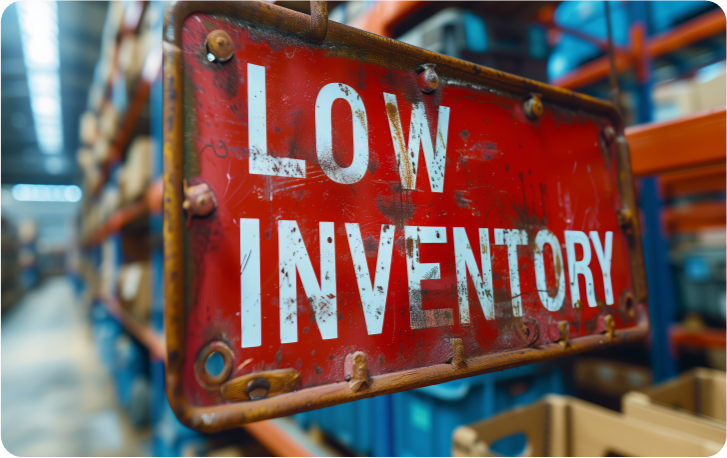There's something confusing happening with California’s home values right now.
Predicting that home values will drop due to soaring interest rates seems reasonable, but the opposite is happening in the Golden State. And they aren't just holding steady; they're going up in some areas.
Why is California's market defying gravity when higher borrowing costs typically cool down home prices? In this post, we're talking about the unique factors keeping the state’s property values high as the cost of borrowing ticks up.
The Cost to Borrow Now Outweighs Home Prices
From 1981 to 2021, a different scenario unfolded in California as interest rates decreased. Borrowing was cheaper, and demand for homes increased, which drove home prices up. The increased prices became the biggest challenge for buyers.
Then, in 2021, the tables turned. Interest rate increases overtook home prices as the most significant factor affecting affordability. This shift changed how buyers - and the market as a whole - approach home buying. It's like being more worried about the cost of gas than the cost of the car itself.

Understandably, buyers expected increased housing costs to add pressure to home values, potentially bringing prices down.
If enough buyers can’t afford to borrow, homes won’t sell, forcing sellers to lower prices. Right?
Unfortunatly, this hasn't been the case.
Where'd The Homes Go?
Higher interest rates haven’t decreased the pool of buyers in a state with, among other factors, decades of pent-up demand (people want to buy but don't have a home to buy) and an undersupply of homes.
Where did the supply go? After the Great Recession (circa 2009), new home construction stopped entirely in California, during this time, homeowners were defaulting on mortgages left and right, and residential construction ground to a halt.
Even before 2009, California hadn’t built enough homes to meet the housing demand for decades. This long-term undersupply of residential construction created a bottleneck that squeezed the housing market, resulting in supply issues.

Add in the impact of 2020 when the state, the country, and the world faced one unprecedented crisis after another. Each crisis negatively impacted residential construction in some way, further compounding the supply issue.
Pandemic-related job losses made it tougher to build homes, while building material shortages made it more expensive to build what homes they could. It was harder to build homes = not enough supply.
There seems to be a theme: NOT ENOUGH SUPPLY, AND PLENTY OF PEOPLE THAT WANT TO BUY. (Feel free to plagerize if you happen to be writing a poem about the current housing market)
Side Note: Another factor that’s contributed to low supply for years is certain zoning restrictions. Specifically, zoning restrictions that discourage high-density development in desirable areas. Denser home construction is one way to increase supply and mitigate high prices.
The Disincentive to Move
An unexpected impact of the high rates on home prices comes from a simple reluctance to move. Homeowners who might have sold their homes to upgrade for a growing family or downsize as empty nesters are choosing to stay put, further limiting the supply of homes for sale.
It’s an understandable reluctance as the financial burden of a new, more expensive mortgage doesn’t make sense. If a homeowner has the option, the decision to stay put, with their current low mortgage rate, is easy.

The same dynamic is being played out with retirees, a group that traditionally sells their larger homes and relocates or downsizes. Paying high mortgage rates on a fixed income makes remaining in the family home a necessary and affordable option.
Ongoing Demand is Absorbing New Supply
It’s not as if zero homes are being sold in the state. No matter what the market conditions are, people will always need to move. Some need to sell and relocate for jobs or sell due to divorce, sickness, or a change in their finances.
This group of sellers are forced to move and become buyers due to life circumstances, regardless of current home values or interest rates. They create a consistent demand, snapping up any new construction or existing homes that hit the market.

By absorbing whatever comes up for sale, they play a huge part in keeping home values high in California, even with high interest rates. Think of it as a baseline level of demand that's always there, come rain or shine - like a game of musical chairs but with houses.
If the limited supply of homes is just enough to satisfy the consistent demand, it creates an equilibrium that keeps prices from dipping. If demand increases above the baseline, and supply doesn’t, prices increase. All this happens regardless of high interest rates.

Bottom Line
In California, the relationship between interest rates, housing supply, and home values is complex and full of unexpected twists and turns. Despite high interest rates, home values are holding steady, if not increasing, thanks to low supply and high borrowing costs.
The low supply was created from a combination of several decades of new construction not keeping up with demand, then stopping completely for a time after the Great Recession. Add in higher mortgage costs that take away a homeowner's incentive to sell.
Yet, despite steeply increasing borrowing costs overtaking home prices as the main affordability challenge, demand remains at a constant level. It’s fueled by people facing life's inevitable changes, immediately absorbing whatever supply is available, contributing to the low supply.
What does all this mean for potential buyers and sellers in the near future? Buyers should brace for competition, especially in desirable areas with tighter supply. High borrowing costs make it crucial to sit down with your Point Equity Loan Officer, crunch those numbers, and really understand what you can afford.
Although sellers might find their properties in high demand due to the low inventory, they’ll face the same challenges once they become buyers.
Remember, the market is always evolving. External economic factors, policy changes, or shifts in consumer sentiment could all play a role in reshaping the current landscape. Staying informed is key to navigating California's housing market for both buyers and sellers.



.png)

.png)


